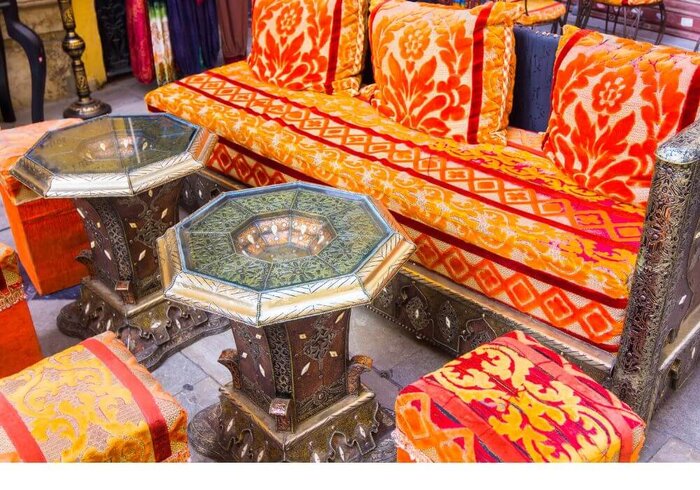Islamic and Arabic Architecture

Take a walk in any Arabic or Islamic city and you will be stunned by the beauty of the architecture. Some of the most dazzling buildings can be found in mosques, ancient cities, and old ruins.
The history of Islamic architecture and buildings is rich and complex, which has given it the fine features that it boasts today.
Although modern cities in Islamic and Arabic states have undergone significant architectural changes, there are still historical sites that remind us of the beauty of Islamic architecture.
Table of Contents
The features of Islamic and Arabic Architecture:

The City:
The city in Islamic architecture focuses on the mosque as the center. Every city has to be surrounded by gates and only a few main roads to the mosques.
The heart of every Islamic city is the mosque and it’s where a lot of activities happen. For instance, a lot of mosques purposely built education centers called lmsid and even courts nearby.
The roads were used to help merchants navigate easily through the city in order to export goods.
The Gardens:

Gardens have always had huge importance for Islamic architecture. They were close to mosques and it was where people would gather around in the heat of summer.
The architecture of gardens in Islamic cities is very similar to the Persian paradise gardens.
The Riad:

The riad is a style of home where a lot of people live at the same time. It’s very common in North Africa and it features a wide hollow building with rooms and houses on the outside and a large fountain in the middle with a mini garden.
All of the rooms on every floor of the riad would look out onto the fountain.
The Dome:

Domes are very common in Islamic architecture, especially in Mosques.
Most mosques have a rectangular build but with a large dome on top with exhilarating mosaic tiling that illuminates the entire mosque with breathtaking lighting.
The Arches:
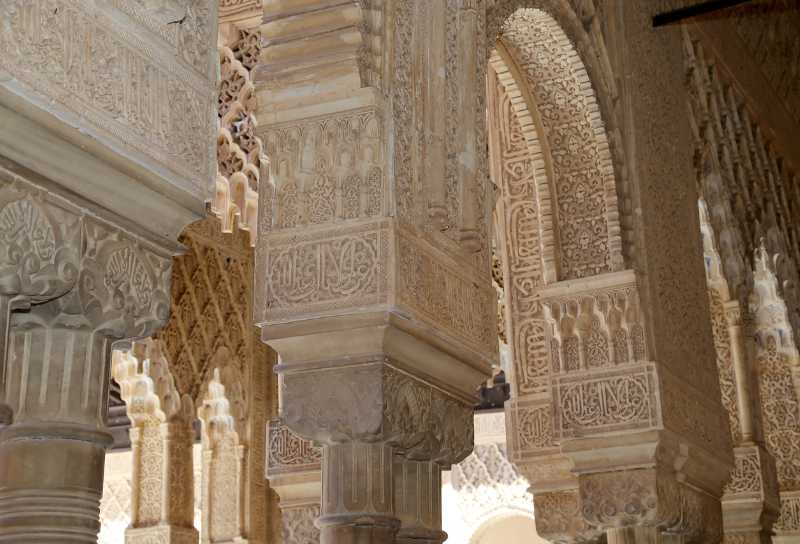
A very popular piece in Islamic architecture is the horseshoe ogee arches that can be seen all around cities. These are usually placed in front of city entrances, neighborhoods, or even large houses.
Minaret:
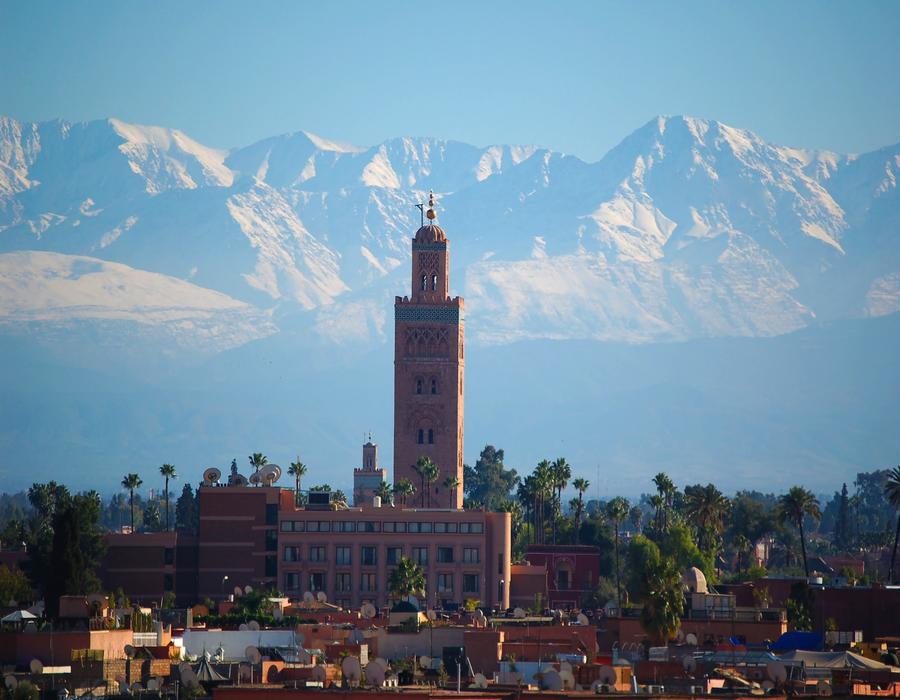
It’s a tower structure with a long staircase and windows. The purpose of the minaret is to call the worshippers of Islam to the prayer five times per day.
With a high reach, the imam helped would climb the minaret to the top and recite al adan.
Calligraphy: An Artistic Expression:
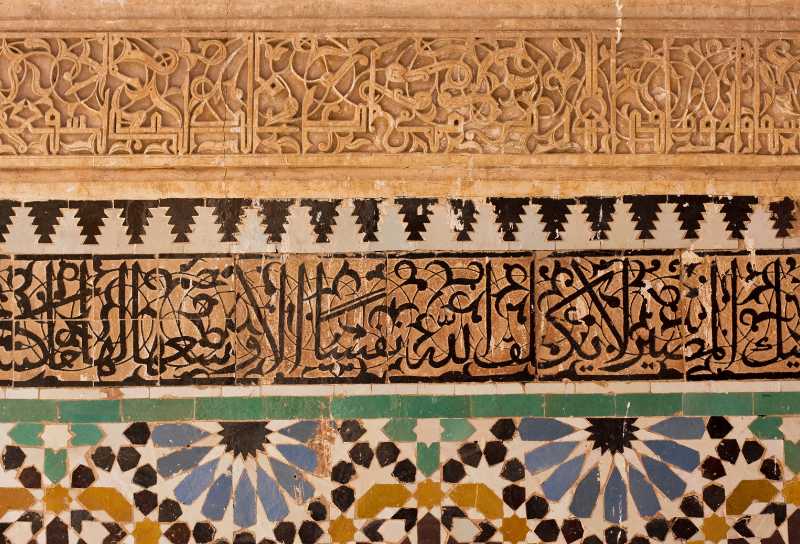
One of the captivating aspects of Islamic and Arabic architecture is the artistry of calligraphy. Calligraphy holds a special place within Islamic culture, beautifully intertwining sacred verses from the Quran and poetic texts into the architectural design.
Expert calligraphers meticulously craft intricate designs, adorning walls, arches, domes, and minarets.
These inscriptions inspire contemplation, fostering a spiritual connection within the space. Each composition is a testament to the skill of the calligrapher, enhancing the overall aesthetic of the structure.
By incorporating calligraphy, Islamic architecture becomes a living art form, where the beauty of the written word converges with architectural grandeur.
Decoration:
Ornamental detail is essential to Islamic architecture for interior as well as exterior. This includes jeweled tiles, very fine geometrical tiles, calligraphic adornments, and kaleidoscopic stones.
Every city has its own designs the features and it make take months to finish the decoration for mosques not including the building.
The State of Arabic and Islamic Architecture Today:
Most Arabic and Islamic architecture today has changed dramatically. We can see examples of this with Burj Khalifa in Dubai as well as the skyscrapers in every metropolitan Arabic city.
Most people in the Arab world are very proud of their architectural heritage but are not willing to live in old buildings.
The main reason is that modern buildings in the suburbs or apartments are a lot more comfortable, cheap, convenient, and close to where people work.
There does not seem to be a revival of old Islamic architecture today although the historical sites are the most popular destinations for tourists all around the world.
However, there are a lot of new architects that push to build new mosques with a modern look.
Top Architectural Sites:
The Dome of the Rock:
One of the best-known architectural sites has a distinct Arabic and Islamic touch. The Dome of the Rock has both Jewish and Islamic claims, but there is no denying that the architecture of the dome is very Islamic.

The Citadel of Aleppo:
Another impressive work of architecture that Islam can be credited to is the citadel which used to be an Islamic military site.
This site was build and reconstructed around the Ayyubid era ( 1171–1260) and it was built like a fortress in order to defend from enemies and plan the next line of attack.

Suleymaniye Mosque complex:
The Istanbul Suleymaniye Mosque complex has to be one of the most impressive buildings created by the Ottoman emperor between 1550 and 1557.
It has a tower, mosques, over 100 windows, and some of the most impressive ornaments you will see. The complex has many religious schools, shops, mausoleums, and even a bath.

Hassan Tower:
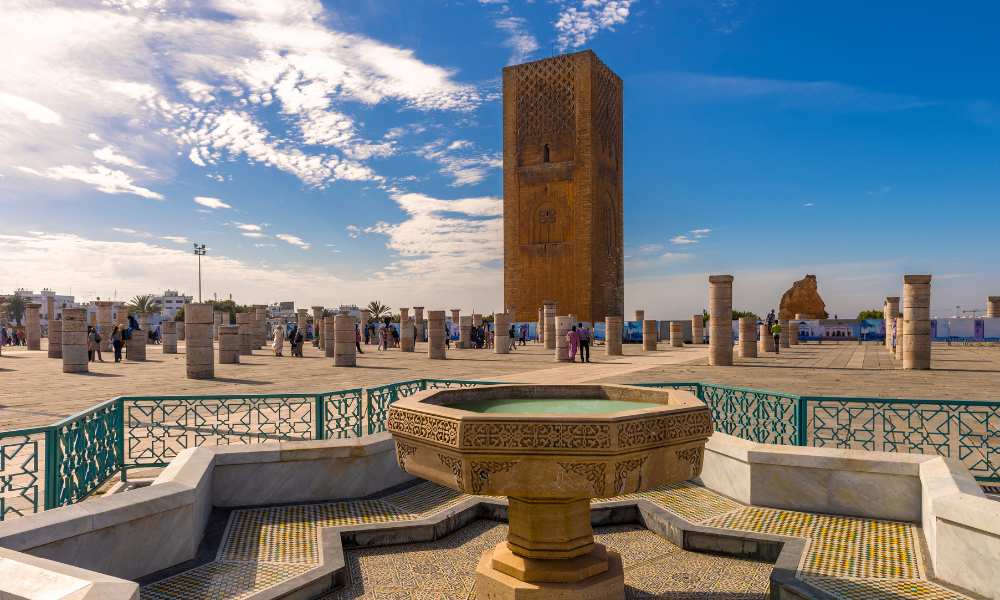
One of the most impressive mosques Mirante. It was created by Almohad Caliphate in Morocco, Rabat in the hopes of creating a mosque for it.
In fact, although the Hassan tower is 44 meters long, it is actually an incomplete Mirante which only goes to say that the mosque was going to be massive.
Great Mosque of Córdoba:
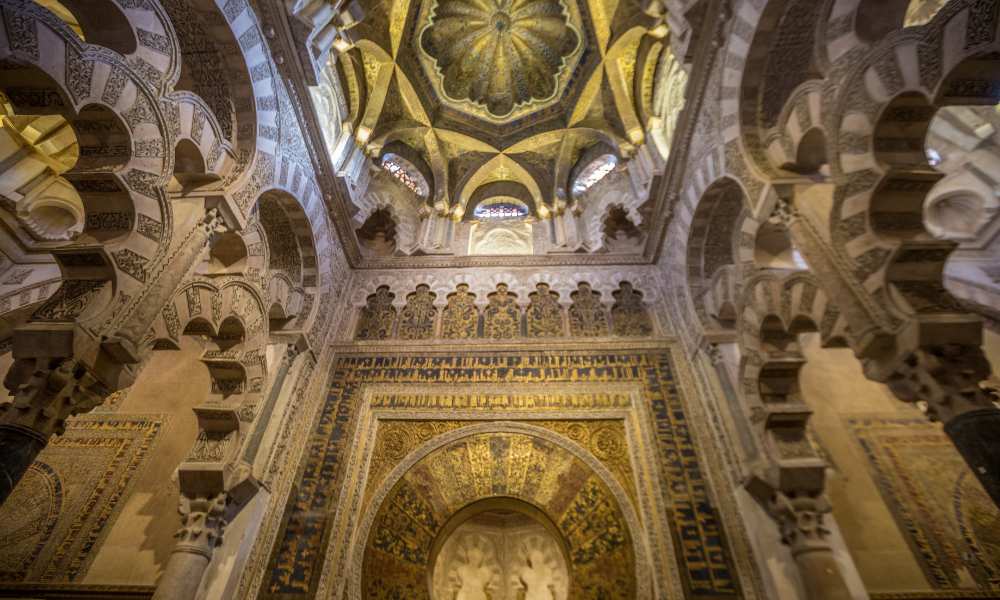
Built on a church by the Umayyad ruler Abd al-Rahman the first between 784–786, the mosque showcases the extent of Islamic spread in Europe with its 850 columns made of porphyry and marble.

